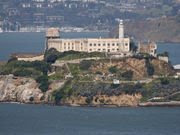
The Taj Mahal (pronounced /tɑʒ mə'hɑl/) (Persian: تاج محل), is a mausoleum located in Agra, India, that was built under Mughal Emperor Shah Jahan in memory of his favorite wife, Mumtaz Mahal.
The Taj Mahal (also "the Taj") is considered the finest example of Mughal architecture, a style that combines elements from Persian, Turkish, Indian, and Islamic architectural styles. In 1983, the Taj Mahal became a UNESCO World Heritage Site and was cited as "the jewel of Muslim art in
The Taj Mahal attracts from 2 to 4 million visitors annually, with more than 200,000 from overseas. Most tourists visit in the cooler months of October, November and February. Polluting traffic is not allowed near the complex and tourists must either walk from carparks or catch an electric bus. The Khawasspuras (northern courtyards) are currently being restored for use as a new visitor centre.The small town to the south of the Taj, known as Taj Ganji or Mumtazabad, originally was constructed with caravanserais, bazaars and markets to serve the needs of visitors and workmen.Lists of recommended travel destinations often feature the Taj Mahal, which also appears in several listings of seven wonders of the modern world, including the recently announced New Seven Wonders of the World, a recent poll with 100 million votes
For security reasons only five items - water in transparent bottles, small video cameras, still cameras, mobile phones and small ladies' purses - are allowed inside the Taj Mahal.
Ever since its construction, the building has been the source of an admiration transcending culture and geography, and so personal and emotional responses to the building have consistently eclipsed scholastic appraisals of the monument.
Ever since its construction, the building has been the source of an admiration transcending culture and geography, and so personal and emotional responses to the building have consistently eclipsed scholastic appraisals of the monument.



































